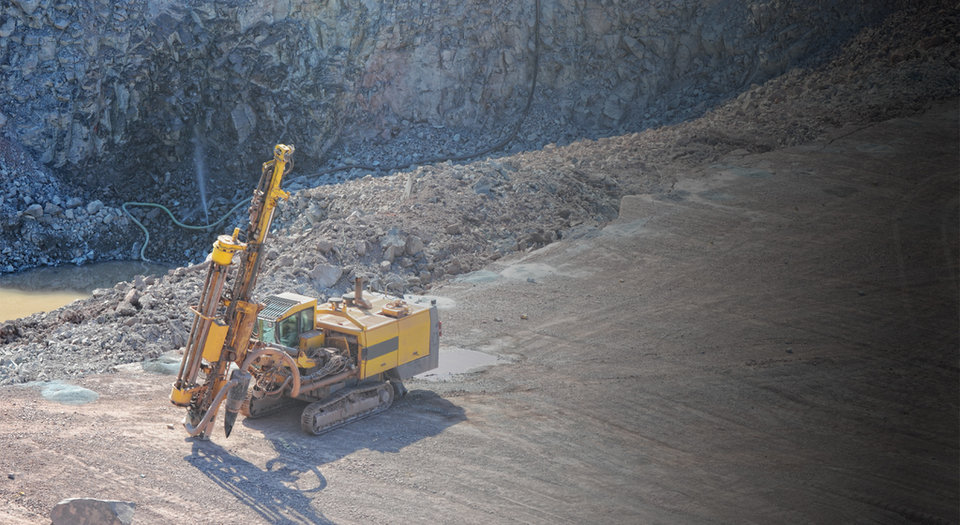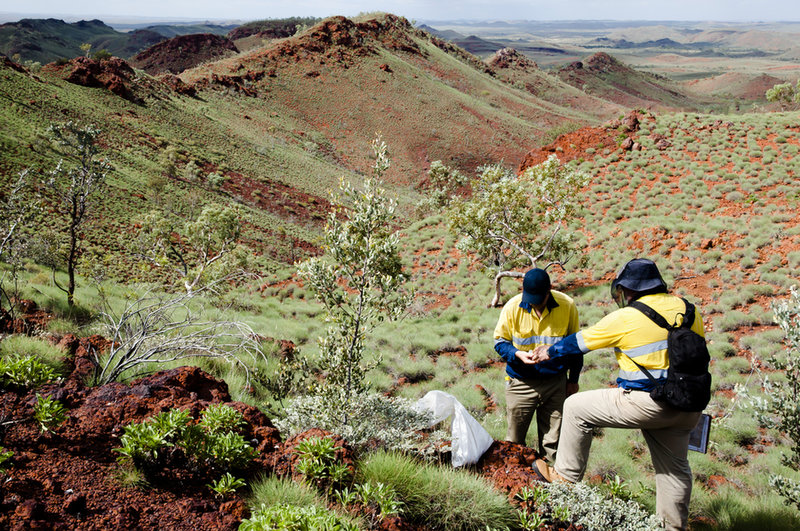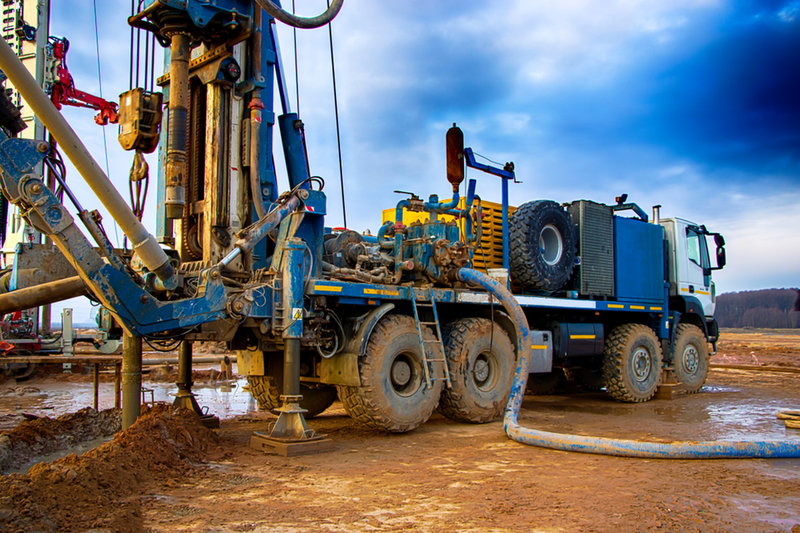
EXPLORATION
On the hunt: the new technologies changing mineral exploration
From chemical research to the development of machine learning solutions, actors across the mining sector are investing in new exploration technologies more than ever. JP Casey profiles some of the most exciting from across the industry.
D espite growing concern about the environmental impacts of large-scale mining, the sector has not been deterred when it comes to exploring new regions and opening new projects. From the UK opening its first coal mine in 30 years to the development of the massive Adani Carmichael coal mine in Australia, miners are eager to invest in new projects in regions not always considered mining heartlands.
However, there is an element of risk associated with these projects, with vast capital expenditure cooling even the strongest enthusiasm for new projects. This inherent risk has been intensified by factors such as the Covid-19 pandemic and the resulting economic uncertainty. S&P Global reported earlier this year that mineral exploration expenditure is set to fall from $9.3bn in 2019 to $6.6bn by the end of 2020, despite little sign of the world’s appetite for minerals easing.
As a result, the need to balance the desire for exploration with the financial risks attached is more pressing than ever, and a number of actors across the mining industry are developing new methods to make exploration more financially secure, and increase the likelihood of success.
The University of Exeter unveils pioneering chemical research
New research published in October 2020 by scientists at the University of Exeter could change how explorers think about rare earth deposits, especially the elements neodymium and dysprosium. The researchers found that chlorine and fluorine are not the key ingredients in making these elements soluble, as was previously thought, but that two different ingredients are more important: sodium and potassium.
Sodium aids in the formation of intermediate minerals, such as burbankite, which are then replaced by the rare earths, while potassium carries dysprosium out to surrounding rocks, effectively separating it from neodymium.
Scientists can now more effectively predict where rare earths are likely to form.
While this result may appear to be little more than a minor variation in chemistry, this could make the world of difference for mining exploration. Sodium and potassium are far more abundant than chlorine and fluorine – collectively making up 5% of the Earth’s crust, as opposed to 0.082% – so miners are more likely to uncover rare earth deposits as they target reserves of these more abundant minerals.
The creation of additional minerals, such as burbankite, further aids in exploration, as explorers have an additional mineral to target, widening the net of potential regions that can be explored for rare earth minerals.
There is also a predictive element to this research, as scientists can now more effectively predict where rare earths are likely to form, helping direct exploration projects before work even begins.

// 3D System Model and Completed Installation. Credit: Deimos
The Urban Mine platform helps identify reusable waste deposits
Part database, part reuse project, the Urban Mine platform is an initiative that profiles industrial waste deposits, to determine whether they contain any base metals or rare earth minerals that would be worth mining.
Launched in 2018 by the Prospecting Secondary Raw Materials in the Urban Mine and Mining Wastes consortium, a pan-European alliance of banks, technology firms, and geological institutions, the project collates waste information from across the continent to offer new mining opportunities that may otherwise have gone ignored.
The project has significant financial potential, with the Global e-Waste Monitor finding that, in 2016, electronic waste alone contained $65bn worth of precious metals and rare earth metals. This figure does not even take into account the 5.7 million tonnes of vehicles that were scrapped in the EU alone in 2017.
Urban Mine claims that the EU, Norway, and Switzerland were responsible for 23% of the world’s electronic waste in 2016.
Considering the significant waste footprint left behind by Europe – Urban Mine claims that the EU, Norway, and Switzerland were responsible for 23% of the world’s electronic waste in 2016 – the project could help open up new mining regions in a part of the world already struggling with industrial waste.
The fact that this is an international, collaborative project could also help the platform’s reach, as it is tied to the agenda and work of no one country or company. The platform is therefore unique in its position, as neither a startup nor research project, and could provide a combination of open source information and easy communication that could prove instrumental in finding new mining deposits in Europe.
Imago streamlines exploration through high-quality cameras and machine learning
US-based startup Imago has developed a high-quality camera that can take pictures of materials mined from deposits and save these images on its own cloud network to enable employees from across a company to assess the makeup of a deposit. This process then forms the basis of a second, machine learning-based process, the sort which is becoming increasingly common across the exploration sector. Many companies are eager to minimise capital expenditure by drilling only in regions where they are likely to find materials.
The analysis can also extrapolate to similar deposits in other regions.
The company’s computers can analyse the images produced on-site and use this to extrapolate which minerals are likely to be found elsewhere in the surrounding area. The analysis can also extrapolate to similar deposits in other regions, creating a predictive database of deposits that is rooted in the analysis of actual products brought up from beneath the surface.
Imago’s solutions also take advantage of the increasingly interconnected and technology-driven nature of the mining industry. Its analysis process exports data that can be used with companies’ own predictive modelling software and the use of newly prominent, yet already widely used, technologies such as cloud storage solutions means the company’s work fits in very well with existing mining data collection and analysis systems.
// Main image: 3D System Model and Completed Installation. Credit: Deimos
West Virginia University opens up rare earth extraction from mining waste
West Virginia University has identified a potentially lucrative reserve of mining wealth: the existing mining waste produced by some of the largest mines in the US. In a similar fashion to the Urban Mine platform, by opening up new mining projects within existing mining jurisdictions, such as mine tailings, there is significant potential for new extractive projects across the south-eastern US.
This project has received significant financial support, in the form of a $5m grant from the US Department of Energy, to scale up a project that collects rare earth minerals from acidic mine tailings from all mining operations, not just coal facilities.
The project is based on a 2018 pilot study, which found that mine waste in the states of Maryland, Ohio, Pennsylvania, and West Virginia could contain up to 2,200 tons of rare earth minerals. The funds will go towards the construction of a full-scale plant at the Mount Storm coal-fired power station in West Virginia.
In Pennsylvania and West Virginia, mines produce 3,000 cubic feet of acidic mine drainage every second.
This initiative has also received the support of the university’s West Virginia Water Research Institute and the state’s department of environmental protection, in addition to Rockwell Automation and TenCate, private companies that will provide technology and machinery. As a result, it is a collaborative project that has already demonstrated its efficacy on a small scale and is set to benefit from a range of experiences and expertise as it moves to operate on a larger scale.
There is a particular need for such a project considering the vast quantities of mine waste produced in the country’s biggest mining states. It has been estimated that in Pennsylvania and West Virginia, mines produce 3,000 cubic feet of acidic mine drainage, the type of waste targeted by this project, every second. Dealing with this ocean of waste in a manner that is both economically productive and environmentally beneficial could be of critical importance to the region.
// Main image: 3D System Model and Completed Installation. Credit: Deimos

// 3D System Model and Completed Installation. Credit: Deimos
Earth AI brings automation and efficiency to the exploration process
Earth AI uses a range of data points from a variety of sources, including NASA and open source data from Geoscience Australia, to develop a sophisticated database of mineral deposits around the world, which can then be used for predicting future deposits in unexplored regions. While this technology is commonly used across the mining industry, in one form or another, the sheer scale of Earth AI’s work is impressive.
Within three years of its founding in 2016, the start-up had attracted over $4m in funding from backers such as Gagarin Capital and AirTree Ventures, in no small part due to the massive financial and operational gains the company offers.
The company claimed to have generated a success rate 50 times greater than that of traditional exploration methods.
In its 2018 pilot studies, Earth AI tested its technology in unexplored regions in Australia, spending an average of $11,000 per prospect discovery, compared to the millions of dollars typically spent in exploration. The company claimed to have generated a success rate 50 times greater than that of traditional exploration methods.
Earth AI has since branched out to use a range of other new technologies, such as drone-based magnetic surveys, which it says can be completed ten times faster than traditional surveying work and at just one-fifth the cost.
The company also aims to provide a holistic package to mining companies by deploying its own camps and supplies for exploration work in remote areas, which can last up to three weeks. Again, Earth AI claims massive cost savings. Supposedly, by using its infrastructure, miners can expect to cut three-quarters of the cost of completing geochemical or geophysical surveys. This combination of new technology integrated with operational efficiency covers a range of exploration bases not often seen in the sector.
// Main image: 3D System Model and Completed Installation. Credit: Deimos